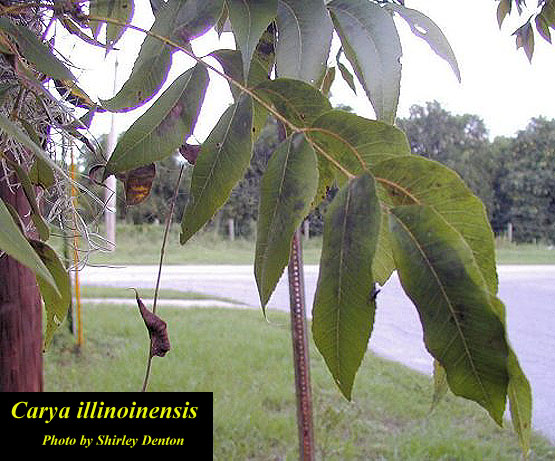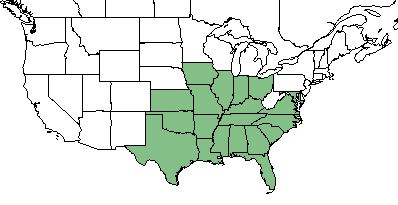Difference between revisions of "Carya illinoinensis"
(→Distribution) |
|||
| Line 31: | Line 31: | ||
==Ecology== | ==Ecology== | ||
===Habitat=== <!--Natural communities, human disturbed habitats, topography, hydrology, soils, light, fire regime requirements for removal of competition, etc.--> | ===Habitat=== <!--Natural communities, human disturbed habitats, topography, hydrology, soils, light, fire regime requirements for removal of competition, etc.--> | ||
| + | ''C. illinoinensis'' is found in bottomlands, suburban woodlands, rural forest edges and floodplains, and is commonly cultivated around dwellings and in orchards. <ref name= "Weakley 2015"/> | ||
<!--===Phenology===--> <!--Timing off flowering, fruiting, seed dispersal, and environmental triggers. Cite PanFlora website if appropriate: http://www.gilnelson.com/PanFlora/ --> | <!--===Phenology===--> <!--Timing off flowering, fruiting, seed dispersal, and environmental triggers. Cite PanFlora website if appropriate: http://www.gilnelson.com/PanFlora/ --> | ||
<!--===Seed dispersal===--> | <!--===Seed dispersal===--> | ||
Revision as of 15:55, 18 May 2018
| Carya illinoinensis | |
|---|---|

| |
| Photo by the Atlas of Florida Plants Database | |
| Scientific classification | |
| Kingdom: | Plantae |
| Division: | Magnoliophyta - Flowering plants |
| Class: | Magnoliopsida - Dicots |
| Order: | Juglandales |
| Family: | Juglandaceae |
| Genus: | Carya |
| Species: | C. illinoinensis |
| Binomial name | |
| Carya illinoinensis Wangen. | |

| |
| Natural range of Carya illinoinensis from USDA NRCS Plants Database. | |
Contents
Taxonomic Notes
Subspecies: Hicoria pecan (Marshall); Hicoria texana LeConte
Varieties: none
Description
C. illinoinensis is a perennial tree of the Juglandaceae family native to North America. [1]
Distribution
C. illinoinensis can be found in the southeastern corner of the United States. [1] It was originally native to the south-central U.S., but is now more widespread due to cultivation. [2]
Ecology
Habitat
C. illinoinensis is found in bottomlands, suburban woodlands, rural forest edges and floodplains, and is commonly cultivated around dwellings and in orchards. [2]
Conservation and Management
Cultivation and restoration
Photo Gallery
References and notes
- ↑ 1.0 1.1 USDA Plant Database https://plants.usda.gov/core/profile?symbol=CAIL2
- ↑ 2.0 2.1 Weakley, A. S. (2015). Flora of the Southern and Mid-Atlantic States. Chapel Hill, NC, University of North Carolina Herbarium.